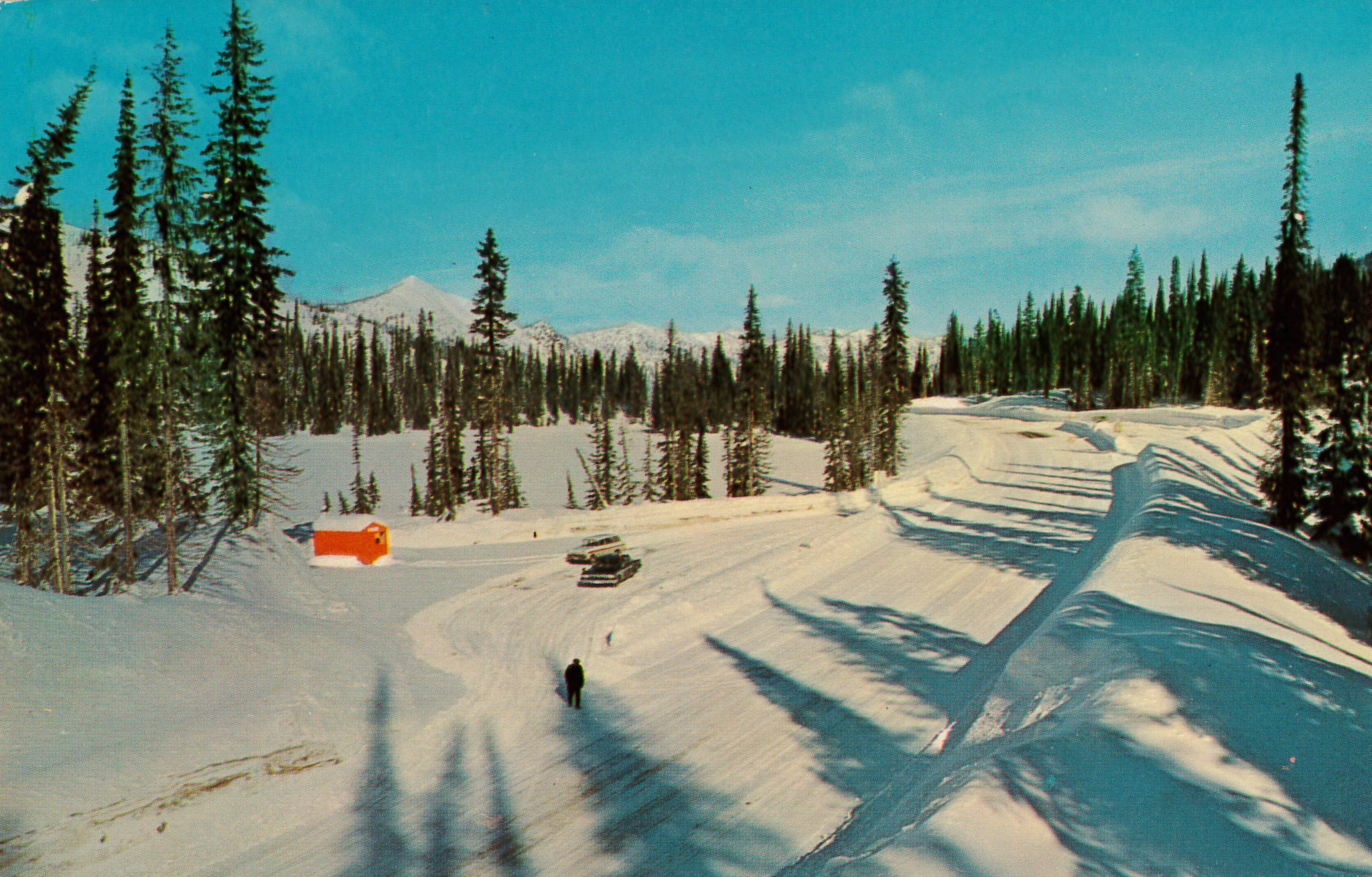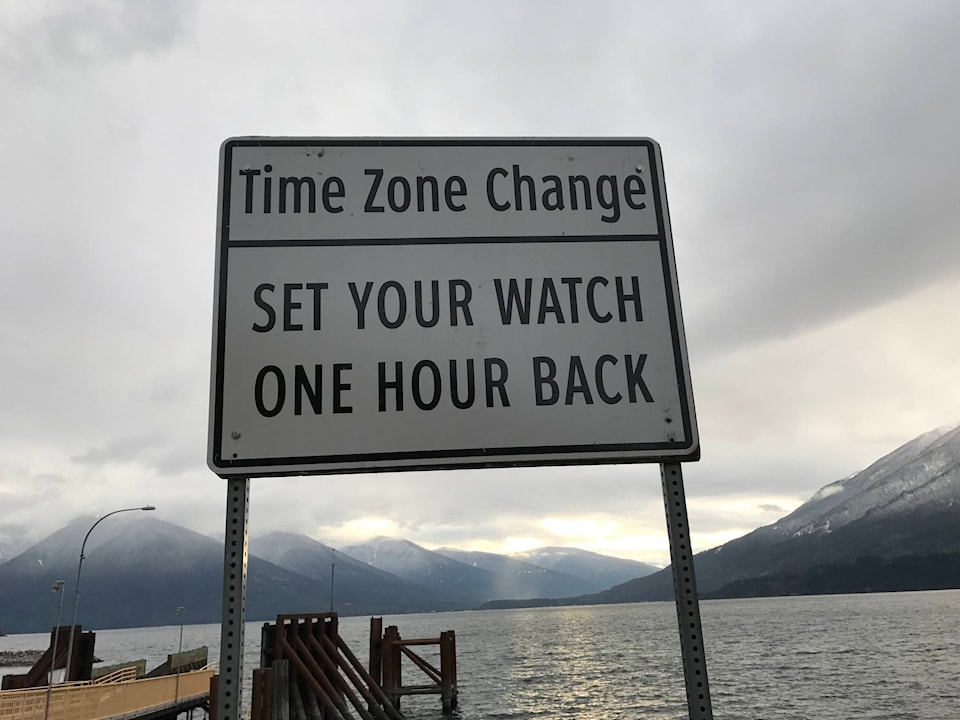Three hundred sixth in a series on West Kootenay/Boundary place names
Last week we started looking at whether Creston is part of the East Kootenay or West Kootenay. It’s not as simple as just consulting the map, for boundaries are as much about social considerations as physical geography.
For what it’s worth, a Google search for Creston plus “West Kootenay” turns up 53,900 results. Creston plus “East Kootenay” produces 170,000 results.
The question was recently posed on the Lost Kootenays Facebook group and the comments (186 of them!) were interesting, with many people linking their answers to time zones. Creston is an anomaly as it remains on Mountain Standard Time year-round. Consequently, as Gray Creek’s Tom Lymbery notes, “In summertime the time change is at Yahk, but when daylight saving ends, the sign migrates to the Kootenay Bay ferry landing.”
Of those who expressed a firm opinion, 41 said Creston is in East Kootenay, 37 said West Kootenay, and 20 said Central Kootenay. Many others were ambivalent, saying it’s both — or neither. Here’s a sampling of the comments.
• Bev Allen: “I always thought once you were up over the Salmo Creston summit, you were in the East Kootenay.”
• Darlene Smith: “Creston feels like a sort of transition between east and west.”
• Jill Hood: “Creston has always been stuck somewhere in the middle, in limbo, neither West Kootenay nor East Kootenay. It doesn’t help that the time never changes in Creston, so half the year it’s on Cranbrook time, the other half on Trail time. None of that matters though when you live in the most beautiful valley in Canada!”
• Lor McDiarmid: “West but with a big toe in the east.”
• David Banks: “It’s kind of on the cusp, isn’t it? Even its time zone has one leg on both sides, Mountain Standard (with Alberta) in the winter, Mountain Standard (equivalent to Pacific Daylight, with British Columbia) in the summer. However, if we have to choose one or the other, it’s definitely East Kootenay, as others have noted the Salmo-Creston Kootenay Skyway (or the equivalent ferry across Kootenay Lake) forms a natural boundary.”
• Eileen Reine: “East Kootenay federally, West Kootenay provincially. Our time never changes so we are neither.”
• Jon Kerby: “On the line! Beautiful both ways!”
• Darrell Noakes: “It’s confusing because of recent political/administrative, health region, etc. uses. Cadastral survey of 1860 gave us the definition most of us grew up with, although we probably wouldn’t have been aware of those origins. That survey put the east/west divide along the Purcell Mountains, putting Creston in the East Kootenay but Crawford Bay in the West Kootenay.”
• Eric Galbraith: “I think we can all agree that Kootenay Lake is in the West Kootenay and that would put Creston there also. It makes sense that the dividing line between east and west would be the high point in the Purcells (Gray Creek Pass, Jumbo Pass, etc. and on Highway 3 east of Creston). This would put the entire drainage of Kootenay Lake in the West Kootenay.”
• Mike Gibbons: “The Kootenay River is the boundary so Creston is in the east. West Creston is in the west.”
• Debbie Mackie: “Depends where you are standing or which way you are driving.”
• Mike Claussen: “Growing up I felt we were more East Kootenay as our minor sports, both hockey and baseball, belonged to East Kootenay leagues … When I talk about where I’m from with my Alberta friends I usually describe it as Central Kootenay. One could also look at it as Creston changes from East to West depending on the time of year and which time zone lines up at that time of year.”
• Greg Trout: “West in the winter, east in the summer.”
• Leslie Kiehlbauch: “Creston is the Centre of the Universe.”
• Len Ringstad: “Creston is ‘the’ central Kootenay. We belong to the RDCK and our school district is Nelson/Creston. However, geographically we are the centre of the Kootenays.”
• Rich Burgess: “It’s bi-Kootenay.”
• Paula Ashby: “We are the heart of the Kootenay.”
• Amanda Miller: “We are our own thing!”
• Lonnie Lang Facchina: “They’re like Switzerland… neutral!”
• John Murley: “Politically it’s Central Kootenay, culturally and geographically it’s East Kootenay, timewise it’s Creston.”
• Christopher Tindall responded to the question “Is Creston in the East or West Kootenay?” with “It sure is!”
We’ll give the last word to Stevland Ambrose, who noted “It is great that we were able to arrive at consensus on this so easily.”

